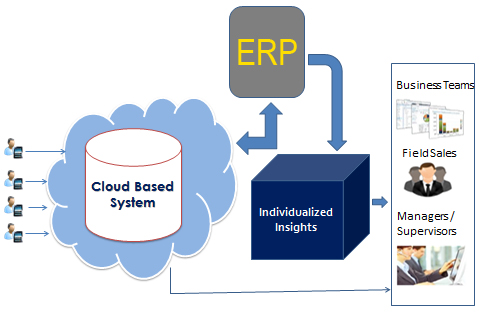
Astix Distribution Management System (DMS) is a collection of applications designed to monitor & control the entire distribution network efficiently and reliably. It acts as a decision support system to assist the control room and field operating personnel with the monitoring and control of the distribution system. Astix DMS covers the complete down-stream supply chain, helping you control promotions, improve productivity, streamline inventory and sales processes, and distributor claims - and get accurate, reliable data on your secondary sales. It enables users to access accurate, real-time information from the marketplace you will receive rapid, reliable secondary sales figures from inventory, promotions and other activities.
Why DMS
- Reduce the duration of outages
- Improve the speed and accuracy of outage predictions.
- Improve the operational efficiency
- Determine the crew resources necessary to achieve restoration objectives.
- Effectively utilize resources between operating regions.
- Determine when best to schedule mutual aid crews.
- Increased customer satisfaction
- A DMS incorporates other mobile technologies, through which there is an improved outage communications for customer calls.
- Provide customers with more accurate estimated restoration times.
Features
- GPS/GIS integrated solution for effective route productivity
- Intuitive user interface
- Route optimization through parameters such as route sales, outlets in the route, quantity/value basis.
- Seamless integration with the brand’s existing ERP system
- Instant invoicing and payment processing
- Day wise target
- Data security enabled by role-based access, data segregation and encryption
- A three-tiered layer architecture ensuring high availability, load balancing and superior scalability
- Image capture and tracking
- Offline capability during intermittent Internet connectivity
- Timely and accurate information to track trade interventions, new product launches
Benefits
- Increasing operational efficiencies with a common working environment for distribution, outage management and network applications.
- Reduced manual work
- Reducing the impact of outages by locating and isolating faults faster.
- Reducing demand and system losses without affecting customer load.
- Productivity improvements
- Speed-to-market – on-board distributors in weeks as against months
- Eliminating the costs to build, maintain and coordinate multiple network models.
- Consistency of operations and process definition throughout the distribution network
- Providing access to on-line operational data for improved decision support and more efficient use of resources.
- End-to-end managed support service offering
- Lower capital expenditure
- Improving understanding of the current state of network, enhancing operational safety and decision making.
